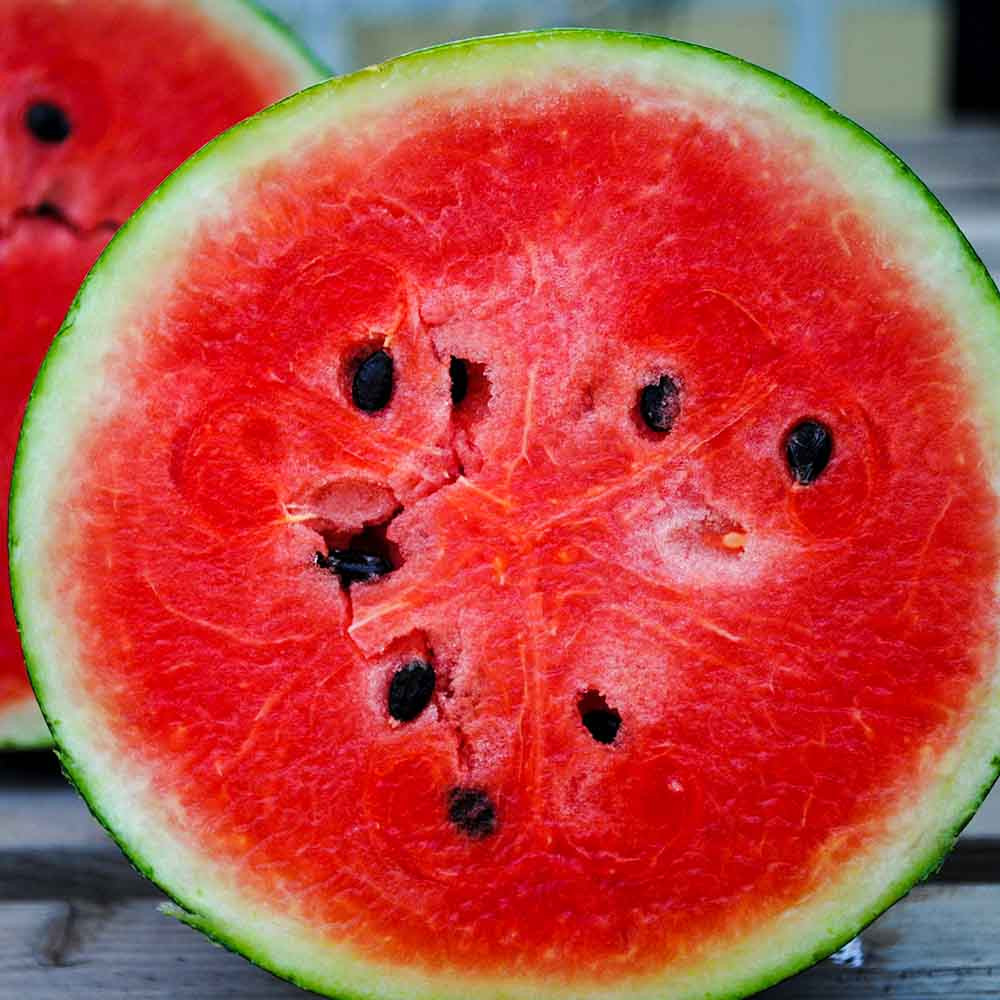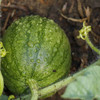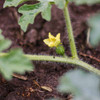Description
Early Crimson Treat Watermelon – The Perfect 'Icebox' Melon for Your Garden
Step back in time to the nostalgia of simpler summers with a watermelon so vibrantly red it's almost shocking—a sweet taste of classic Americana when gardens were filled with flavor.
Enjoy all that delicious watermelon goodness without needing a giant fridge or expansive garden space. This "icebox"-sized variety delivers classic summertime watermelon sweetness in a perfectly compact package. Beloved by generations of gardeners, Crimson Treat, also known as Early Crimson Treat watermelon, continues to be a favorite for a reason. On a hot day, nothing refreshes quite like it.
Description
Crimson Treat watermelons are true to their "icebox" name, yielding a round, compact size ideally suited for most home refrigerators. Expect your melons to weigh around 8-10 pounds, making them easy to handle and less intimidating for new growers. Plan for a growing season of around 70-80 days from planting the seed to harvest.
When it's time to harvest, the vibrant, deep red flesh is irresistible, promising incredible sweetness and refreshment. Visually, Crimson Treat is a classic! It features the traditional watermelon look with dark green stripes alternating with light stripes on the rind.
Crimson Treat watermelons are versatile, thriving in large containers, raised beds, or traditional row gardens.
It is a fantastic choice for container gardening and growing vertically on a trellis. While its vines love to spread out, training them upwards conserves valuable ground space. Its compact "icebox" size means the melons are smaller and lighter, perfect for support on a trellis.
For a thriving container-grown Crimson Treat, start with a large pot or container—at least 20 gallons—that provide ample space for the plant's roots to develop and helps the soil retain moisture.
Choose a sturdy trellis that can support the weight of the vines and the developing melons, securing it well to avoid tipping. Good quality, well-draining potting mix with added compost is a must. Finally, consistent watering and regular fertilizing throughout the growing season will help your plant produce a delicious harvest of sweet, refreshing watermelons!
History
Watermelons have a remarkably long, fascinating history. They likely originated in the deserts of southern Africa over 5000 years ago, and researchers point to the Kalahari Desert as a likely source. Botanical evidence and wild, citron-like watermelons in the region support this theory. Their water storage ability made them a precious resource and valuable for domestication.
Ancient Egyptians held watermelons in high regard, demonstrated by their presence in hieroglyphics and burial tombs. Paintings like those in the tomb of Khnumhotep II (around 1900 BCE) vividly depict watermelon’s importance in daily life. Seeds discovered in the tomb of King Tutankhamun (around 1323 BCE) further confirm their cultivation in Ancient Egypt. Watermelons were likely a vital source of hydration in the arid climate, a treasured symbol of refreshment and abundance.
Watermelons traveled far and wide from Africa, mainly through trade routes that carried them across the Mediterranean, eventually reaching India and China. Archeological evidence, such as seeds found in sites along the Nile River, helps trace the spread of watermelon cultivation. By the 10th century CE, writings indicate they had entered southern Europe, becoming a beloved summer fruit across countries.
European colonists and enslaved Africans introduced the first watermelon seeds to the Americas. Records show them flourishing in Florida as early as the 16th century, rapidly becoming a summertime staple.
The Crimson Treat watermelon emerged in the USA during the first half of the 20th century. Breeders aimed to develop a variety with exceptional sweetness, disease resistance, and a manageable "icebox" size perfect for home gardens. Crimson Treat quickly won over home gardeners with its reliable sweetness and dependable growth. It remains a celebrated heirloom variety, offering a delicious taste of the past and modern gardening convenience. Today, it remains a celebrated heirloom variety, reminding us of the ingenuity of past breeders and offering a delicious slice of gardening history.
Uses
Culinary – The primary joy of a Crimson Treat watermelon is its fresh, sweet flavor! Cut into wedges or cubes, it's the ultimate summer snack, perfect for picnics, poolside lounging, or anytime you crave a refreshing treat. But the deliciousness doesn't stop there! Here are just a few ways to get creative:
- Fruit Salad: Crimson Treat adds color and juicy sweetness to fruit salads.
- Savory Surprise: Toss chunks into salads with feta cheese, mint, and a drizzle of balsamic for a sweet and savory flavor explosion.
- Skewers & Popsicles: Skewer melon cubes with other fruits or freeze them for refreshing homemade popsicles.
- Drinks & Infusions: Muddle it into delicious drinks, blend it into thirst-quenching chilled soups like gazpacho, or add it to infused waters with cucumber, mint, or citrus.
- Beyond the Bowl: Try grilling slices for a caramelized twist, adding it to a vibrant watermelon salsa, or scooping out melon balls for an elegant appetizer.
Garden – Those leafy vines are helpful, too! If you have room, let them spread to create a lush, weed-suppressing ground cover while your watermelons develop. Their sprawling habit helps retain soil moisture and keeps weeds at bay, easing your garden workload.
Preserving – Crimson Treat is a superstar for classic summertime watermelon rind pickles. Pickle the rinds into sweet-and-tangy delights that preserve some summer flavor for later in the year.
Companion Planting
Beneficial companions include nasturtiums, marigolds, and oregano near your melons to attract pollinators and deter pests.
Antagonistic plantings include potatoes and squash family members, as they can compete for water and nutrients.
Pest and Disease Management
Common problems include aphids and cucumber beetles. Handpick when possible, and use insecticidal soap for heavy infestations.
Solutions to the above issues are mostly common sense – good air circulation is vital, so allow the vines and leaves space to promote airflow; don’t bunch them up. Water your plants with a drip system or at the base to avoid getting the leaves wet, which can lead to disease. If pests appear, consider using organic control options such as neem oil, insecticidal soaps, or beneficial insects. Don't panic if you see pests in your garden - it's a natural part of the ecosystem. Even the most experienced gardeners deal with pests from time to time.
Planting and Growing Tips
Start right – warm, well-drained, fertile soil. Watermelons dislike cold, soggy roots. Enhance your soil's quality by generously adding compost before planting. This boost of organic matter improves drainage and fertility, giving you a solid start.
Watermelons are sun worshippers, thriving in full, direct sunlight. Ensure they receive at least 8 hours of unfiltered sunlight daily for optimal growth and the sweetest flavor.
Space your plants several feet apart or trellis them to give them room to spread comfortably. This allows for good airflow, reducing disease risk and ensuring each melon has space to reach its full size.
Keep the soil evenly moist throughout the growing season but never waterlogged. Deep and regular watering is essential for juicy, flavorful fruits when the melons begin to form. An occasional deep soak followed by slight soil surface drying is better than frequent shallow watering.
Harvest Tips
Harvest your Crimson Treat watermelons in the morning for the absolute peak of sweetness. The sugar content is at its highest after a night of rest.
Look for a slight dulling of the rind color, which indicates ripeness. Next, find the curly tendril nearest the melon. It should be thoroughly dried and brown. Look at the underside of the melon resting on the ground; it should change from a pale white to a creamy yellow as the melon ripens. The classic 'thump' test is not 100% reliable for every type of melon.
Once your Crimson Treats start ripening, get ready for a delicious wave of harvests! The plants will continue to produce for a long time, keeping you in sweet, juicy watermelon all season. Monitor your melons closely, using those ripeness cues to guide your harvest timing.
Learn More
From the soil to the seed to the food you eat - we'll help you grow your best garden!
















